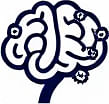Approaches to a Balanced Life Through Mental Models
 by Lilian Nienow
by Lilian Nienow
Explore how mental models can guide individuals toward achieving balance in daily routines, work, and personal growth. This article examines practical strategies for integrating cognitive tools into everyday life for better decision-making and well-being, appealing to professionals and lifelong learners.

Mental models serve as cognitive frameworks that help shape decisions and behaviors. These tools offer ways to simplify life's challenges and promote equilibrium across various aspects. For instance, mental models can assist in managing time effectively.
One useful framework is the Eisenhower Matrix. This model categorizes tasks based on urgency and importance. By using it, people can focus on what truly matters. The Eisenhower Matrix divides activities into four quadrants, allowing for clearer priorities.
Another approach involves the concept of opportunity cost. This idea highlights the trade-offs in choices. When selecting one option, individuals give up another. Understanding opportunity cost encourages thoughtful decisions that align with long-term goals.
In practice, applying these models can transform routines. For example, in a professional setting, someone might use the Eisenhower Matrix to sort daily tasks. This leads to reduced stress and increased productivity.
Systems thinking provides another angle. It views elements as interconnected parts of a larger whole. Recognizing these links helps in addressing issues holistically. For balanced living, systems thinking reveals how work affects health and relationships.
Consider a simple daily example. A person might analyze their schedule through systems thinking. They see how exercise influences energy levels and mood. This insight fosters habits that support overall harmony.
Feedback loops are also key. These are processes where outputs influence inputs over time. Positive feedback loops amplify behaviors, while negative ones stabilize them. Identifying feedback loops in life can help maintain balance. For instance, regular reflection creates a positive loop for personal development.
To implement these ideas, start with small steps. Begin by listing daily activities and applying the Eisenhower Matrix. Over time, this builds awareness and improves decision-making.
Benefits of Using Mental Models for Balance
Adopting mental models yields several advantages. They enhance clarity in choices and reduce overwhelm. People often report better focus and satisfaction. In business contexts, these tools aid in strategy and resource allocation.
For cognitive development, mental models sharpen thinking skills. They encourage critical analysis and problem-solving. Lifelong learners find them valuable for continuous growth.
Real-world applications abound. An entrepreneur might use opportunity cost to evaluate investments. This prevents overcommitment and supports sustainable progress.
In personal life, balancing family and career is common. Here, systems thinking shows interdependencies. Adjusting one area can positively impact others, leading to greater stability.
Practical Tips for Integration
- Identify key areas: Work, health, and relationships.
- Apply one model at a time: Start with the Eisenhower Matrix for task management.
- Reflect weekly: Assess what worked and adjust as needed.
- Combine models: Use opportunity cost alongside systems thinking for comprehensive planning.
These tips make the process accessible. Over time, they become second nature, aiding in sustained balance.
Challenges may arise, such as resistance to change. However, persistence pays off. With consistent use, mental models integrate seamlessly into daily life.
Ultimately, these approaches empower individuals. They provide tools for navigating life's demands with greater ease. By prioritizing balance, people can achieve more fulfilling experiences.
In summary, mental models like the Eisenhower Matrix and opportunity cost offer practical paths to equilibrium. Their application spans psychology and business, benefiting curious minds and professionals alike.
